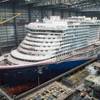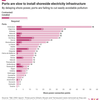Refining capacity in Asia has been growing rapidly for many years. Not surprisingly, the vast majority of this growth took place in China, which more than doubled its refining capacity over the last 10 years.
The other significant growth engine in Asia has been India. However, the impact of these two refining powerhouses on the product tanker market has (so far) been very different.
While a significant portion of India’s new refining output has been exported into world markets, boosting demand for all sizes of product tankers, China’s growth has been predominantly focused on satisfying rapidly expanding domestic demand.
However, the future may look different from the past and product tanker owners are likely to benefit from continued growth in Asia’s clean product trades.
Historically, refining capacity has grown in lock-step with product demand in most countries in the region. However,there are a few notable exceptions.
The most significant is Singapore. Due to its strategic location between the Indian and Pacific Oceans and near the Straits of Malacca, this city-state established itself in the 1970s as the largest player in the Asian refined product market.
Singapore is home to several large refineries with a total crude refining capacity of 1.5 million barrels per day (b/d). Singapore is a trading nation and imports as well as exports large volumes of refined products. It is also the world’s largest consumer of bunker fuel oil.
In the late 1990s South Korea’s refining capacity expanded well beyond domestic demand as the country was hit by the Asian financial crisis. The South Korean refining industry is sophisticated and, as a result, capacity utilization is high.
While domestic demand growth could be limited as a result of declining population growth and ageing demographics, South Korea is expected to remain a leading refiner in Asia with significant exports to China, Singapore and Indonesia. South Korea is Asia’s second largest product trader.
The third largest player in the Asian refined product trades is India. Unlike Singapore and South Korea, which are both significant importers and exporters of product, India is predominantly an exporter. Companies like Essar and Reliance, which built a number of large, sophisticated export oriented refineries, sell petroleum products worldwide, both within Asia-Pacific as well as in Europe and the United States.
Significant additional refining capacity is expected to come online in India over the next five years, mostly to satisfy demand growth, but some will be used for additional exports.
Several Asian countries have developed into significant net importers of refined products. In Indonesia, for example, refining capacity has not kept pace with steady demand growth over the years, while countries like Japan and Australia need to import more refined products following domestic refinery closures.
The country to watch going forward is China. While China has been a net exporter of clean petroleum products (excluding Fuel Oil) for several years already, we expect it to become a more significant player in the product trades in the future as the country’s refining industry remains on a rapid growth trajectory, while demand growth for refined products is slowing.
The impact on the refined product trades and product tanker employment in the Pacific could be profound.














